John Hurrell – 2 May, 2013
They make fascinating objects, these canvases - to look through and at - with Cousins playing with the ambiguities between screenprinted and mechanically applied paint (as if reversing the sequence, or the two being one and the same), occasionally incorporating squeezed on daubs of tubed colour as well.
In the Lorne Street branch of Gow Langsford you can currently see the new James Cousins show, five canvases that continue his exploration of layering an image with complex masking techniques so that two different pictures are simultaneously sandwiched - yet optically co-shredded - together. This time the labour intensive use of zigzagging paper tape is not evident. Instead it is more the use of the Elam painting machine, manipulated digital printing technology, and on top, very fine serigraphs (usually more than one silkscreen at a time).
Cousins’ new work is devilishly impossible to photograph. Not only is the delicate transparent colouration tricky to record, but the linear patterns cause havoc with a digital camera and your computer. For example the Gow Langsford website here. Those bulbous swirling moiré patterns you see there and above are not in the work. Artsdiary is better. [Thank you Sait.] The work is very complex, but not vertigo (or nausea) inducing. You don’t require a cuspidor or a glass of water.
You need a personal gallery visit if you are curious. And you should be: it’s well worth it. Cousins makes intriguing images where you try to look through one to get cognitive access to another. The base images are of flowering bushes, taken from book plates, and he seems to be commenting on nature and its ornamental properties as a cultural construct. With the screening the surfaces tend to be dark and murky, yet still very intricate. The picture plane is accentuated more than in earlier shows.
Many of these paintings have delicate and densely packed lines of screened concentric circles, like long playing records, and are very much like rock music bootlegs of the early eighties - with celebrity images screened over clear or coloured transparent plastic. Some also have the transfered computer painted images only partially covering the canvas surface, so that a quarter of the way up only the vertical paint jets (not horizontal) align in descending parallel lines down to the bottom edge, or wispily spray down the sides.
They make fascinating objects, these canvases - to look through and at - with Cousins playing with the ambiguities between screenprinted and mechanically applied paint (as if reversing the sequence, or the two being one and the same), occasionally incorporating squeezed on daubs of tubed colour as well. The flickering intricate serigraphs usually overwhelm the botanical imagery so it peeks through the parallel lines as if they were sheets of transparent cellophane. Decorative and light, the floral motifs seem oddly contained and clouded, even restrained and muted, by the dark toned, overlaid colour.
Cousins’ canvases have an unnerving industrial feel, due to the clinical precision and fineness of the screen lines, making them oddly more like Paolozzi than Warhol, more Hamilton than Polke. This is because they fascinate when inspected close up. They also intrigue through the tonal weight of the added screen layers that collectively squelches out the fragility of the plant structures - a sort of optical ‘stacks on the mill’ - yet have enough spontaneous, unpredictable elements ‘down under’ to hold your interest. Exciting work.
John Hurrell
Recent Comments
Anna Jackson
Hi John, Yes - some elements are spray painted which I guess you could say is a mechanised paint application. ...
John Hurrell
Hi Anna, just lingering on this conversation a wee while longer: some of the lines in say Pl.518 and Pl.523 ...
John Hurrell
Thanks Anna. Those are important details. It's crucial to have that aspect corrected.
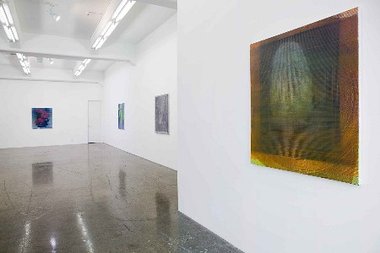
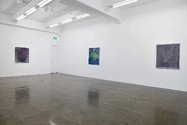
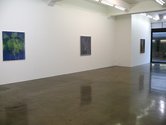
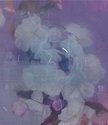
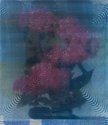

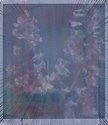
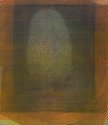
 Advertising in this column
Advertising in this column Two Rooms presents a program of residencies and projects
Two Rooms presents a program of residencies and projects



This Discussion has 4 comments.
Comment
Anna Jackson, 2:51 p.m. 3 May, 2013 #
Hi John,
Just to clarify re: the process – all the works are painted. The screenprinted look you refer to is the result of James’ use of vinyl stencils, similar to those he has used in the past. These are generated via a vinyl cutting machine and that aside; there is no digital process at all. (and FYI the Elam painting machine is no longer..)
Best,
Anna
John Hurrell, 6:45 p.m. 3 May, 2013 #
Thanks Anna. Those are important details. It's crucial to have that aspect corrected.
John Hurrell, 8:31 a.m. 4 May, 2013 #
Hi Anna, just lingering on this conversation a wee while longer: some of the lines in say Pl.518 and Pl.523 look sprayed not screened, even affecting the sides of the stretcher - not just the front. It looks like some sort of information storage and mechanical process at work.
Anna Jackson, 2:49 p.m. 6 May, 2013 #
Hi John,
Yes - some elements are spray painted which I guess you could say is a mechanised paint application.
Anna
Participate
Register to Participate.
Sign in
Sign in to an existing account.